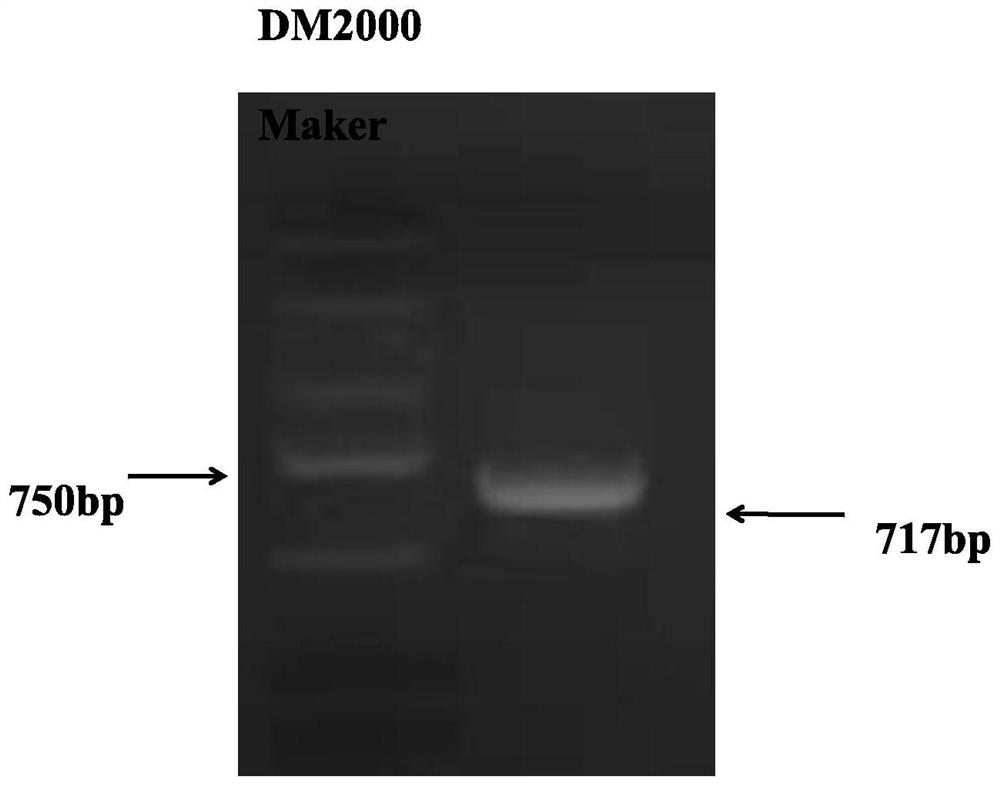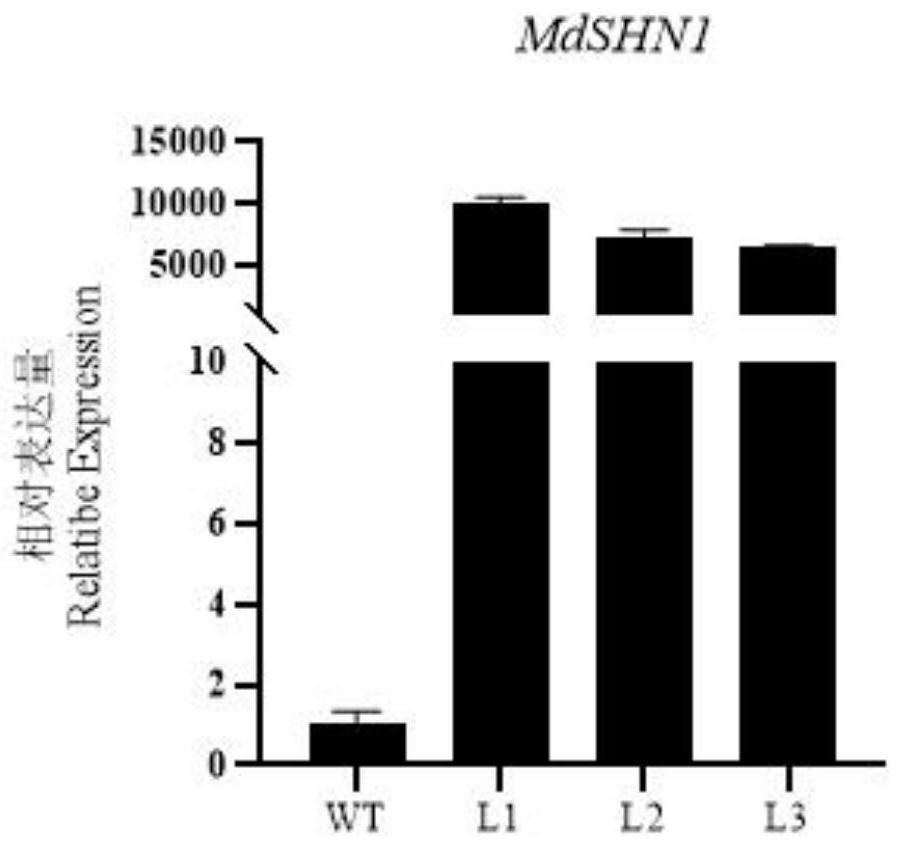Apple MdSHN1 gene and application of apple MdSHN1 gene in improving waterlogging tolerance of plants
A technology of waterlogging tolerance and gene, applied in apple MdSHN1 gene and its application in improving plant waterlogging tolerance, can solve the problems of reducing petunia's tolerance to flooding, and achieve the effect of enhancing waterlogging tolerance
- Summary
- Abstract
- Description
- Claims
- Application Information
AI Technical Summary
Problems solved by technology
Method used
Image
Examples
Embodiment 1
[0050] Cloning of embodiment 1 apple MdSHN1 gene
[0051] (1) RNA extraction and reverse transcription of Pingyi sweet tea leaves
[0052] 1. Extraction of apple total RNA
[0053] The extraction method of total RNA from apple leaves was slightly optimized according to the instructions of the RNA extraction kit (Shenggong). The specific process is as follows:
[0054] (1) Add 500μl Buffer Rlysis-PG into 1.5ml RNase-free centrifuge tube for later use.
[0055] (2) Add 50 mg of plant tissue samples ground by liquid nitrogen to the above-mentioned 1.5 ml centrifuge tube, shake and mix immediately, and place at room temperature for 5 min.
[0056] (3) Centrifuge at 13,400g, 4°C for 3min, and transfer the supernatant to a new 1.5mL RNase-free centrifuge tube.
[0057] (4) Add 1 / 2 volume of absolute ethanol and mix well.
[0058] (5) Put the adsorption column into the collection tube, add all the solution to the adsorption column with a pipette, let it stand for 1 min, centrifu...
Embodiment 2
[0076] Embodiment 2 plant overexpression vector construction
[0077] In order to study the function of the MdSHN1 gene, the pCAMBIA2300-GFP vector was digested with Xbal and Kpn enzymes, the recovered product was ligated with the target gene, and transformed into DH5α competent cells, and sequenced after bacterial screening to form the MdSHN1 overexpression vector. The MdSHN1 overexpression vector was transformed into Agrobacterium GV3101 for use.
Embodiment 3
[0078] The acquisition of embodiment 3 transgenic Arabidopsis
[0079] Arabidopsis thaliana was infected by the inflorescence infection method, referring to the method of Clough et al. (1998). Select 4-week-old robust Arabidopsis plants, cut off the fruit pods that have bloomed before the first infection, and water enough to keep the soil moist. To increase transformation efficiency, approximately one week later, perform a second infection. After the seeds are mature, the T0 generation seeds are collected in a dry centrifuge tube, stored after the seeds are dried, and placed at 4°C for vernalization for later use. The plant resistance of the plant overexpression vector pCAMBIA2300-GFP is kanamycin, which can be integrated into the plant genome along with the target gene during transformation, so kanamycin is used to screen the Arabidopsis seeds obtained after infection.
[0080] First, disinfect the obtained Arabidopsis seeds: soak in 5% sodium hypochlorite for 5 minutes, an...
PUM
 Login to View More
Login to View More Abstract
Description
Claims
Application Information
 Login to View More
Login to View More - R&D
- Intellectual Property
- Life Sciences
- Materials
- Tech Scout
- Unparalleled Data Quality
- Higher Quality Content
- 60% Fewer Hallucinations
Browse by: Latest US Patents, China's latest patents, Technical Efficacy Thesaurus, Application Domain, Technology Topic, Popular Technical Reports.
© 2025 PatSnap. All rights reserved.Legal|Privacy policy|Modern Slavery Act Transparency Statement|Sitemap|About US| Contact US: help@patsnap.com



